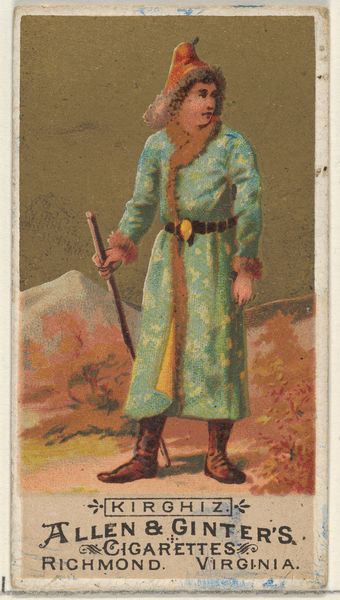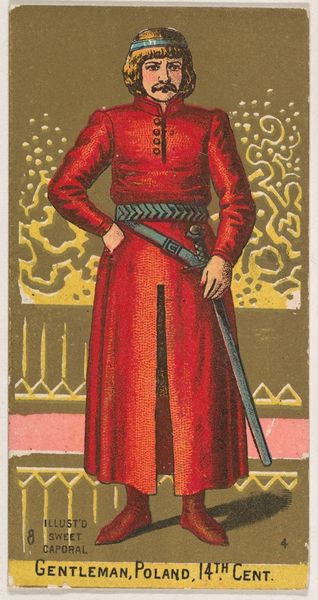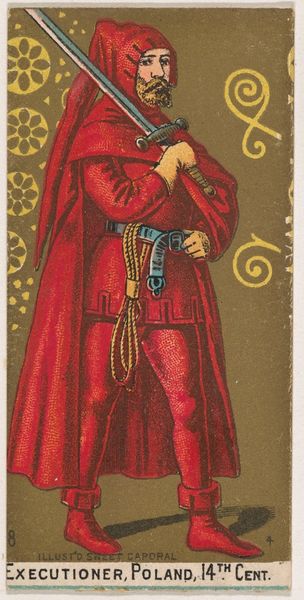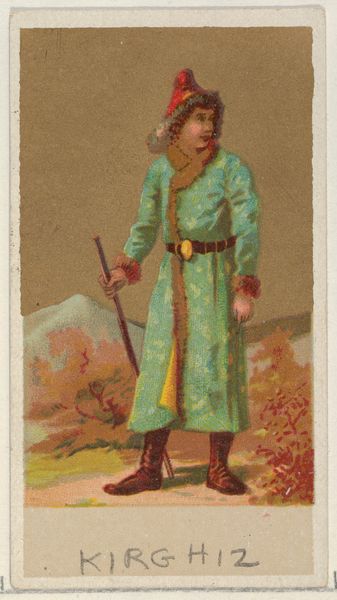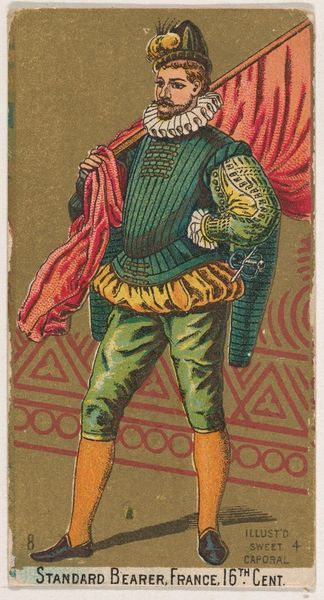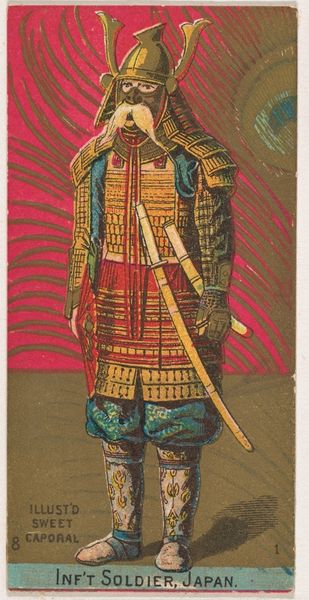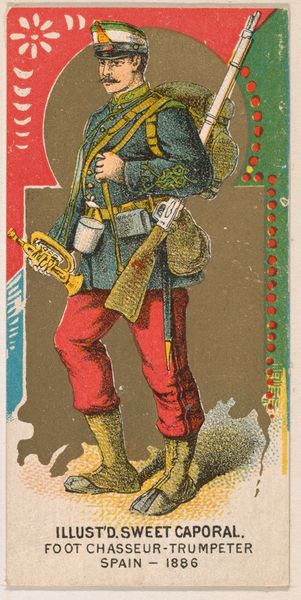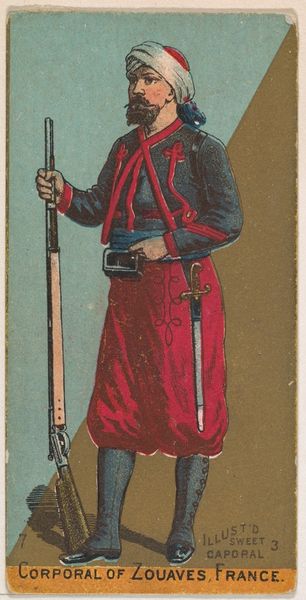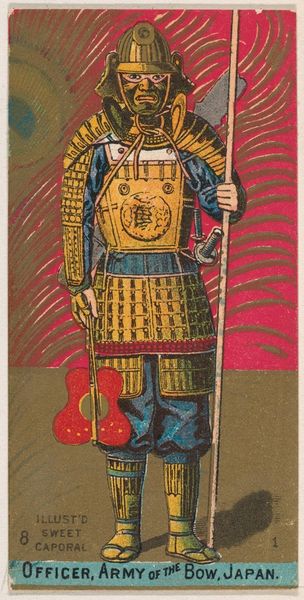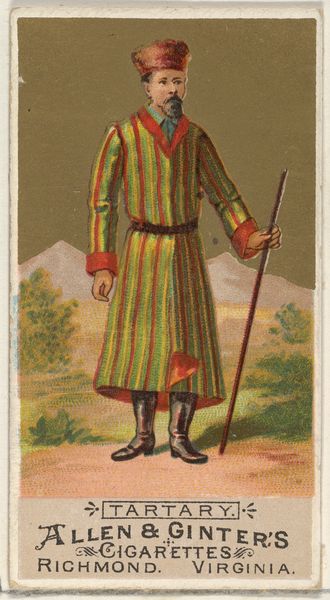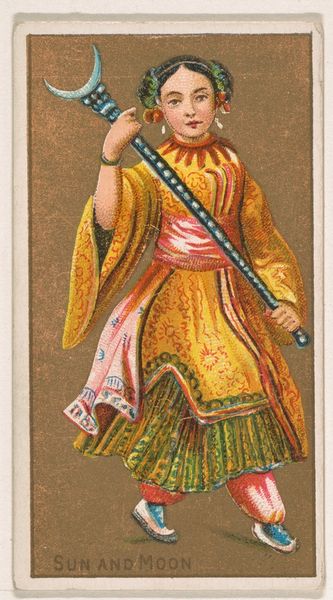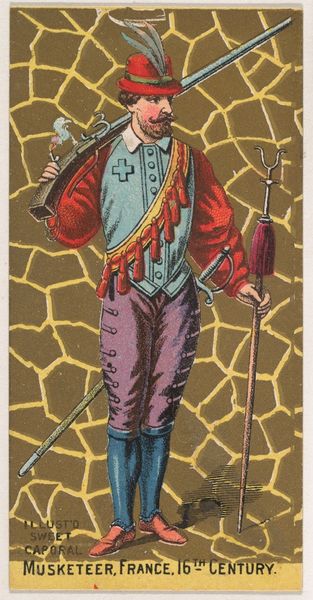
Bowman, Poland, 14th Century, from the Military Series (N224) issued by Kinney Tobacco Company to promote Sweet Caporal Cigarettes 1888
0:00
0:00
drawing, print
#
portrait
#
drawing
#
medieval
# print
#
pop art
#
men
#
genre-painting
#
history-painting
Dimensions: Sheet: 2 3/4 × 1 1/2 in. (7 × 3.8 cm)
Copyright: Public Domain
Editor: Here we have a chromolithograph print entitled "Bowman, Poland, 14th Century," from 1888, made by Kinney Tobacco Company as an advertisement. It's interesting how vibrant the colors still appear after all this time, considering it's essentially an advertisement on paper. How do you interpret its role in society back then? Curator: Well, remember this was part of a series. What’s being sold here isn't just cigarettes; it's a certain idea of history and national identity. The figures chosen, their depiction…it all feeds into a specific, constructed narrative. Who is included and how are they represented becomes a form of cultural power. Editor: That makes sense. It’s presented so straightforwardly, as if this Polish bowman perfectly encapsulates a historical period. Are these tobacco cards trying to educate or simply persuade consumers? Curator: Both, I think. These cards provided snippets of historical information, but filtered through a very particular lens. These series served to normalize and celebrate specific cultural narratives tied to ideals of nationhood and masculine virtue – think about the audience it's geared towards. It romanticizes this bowman as heroic and representative, effectively solidifying specific, possibly biased, ideas about Polish history. Editor: So it’s less about factual representation and more about cultural messaging packaged within an attractive and collectible format? Curator: Exactly. And consider the circulation! Distributed with tobacco products, these images were widely accessible. They contributed significantly to shaping popular understanding and reinforcing particular perceptions about Poland and its history, for a wide audience. It shows how popular culture is used in creating narratives of other groups of people. Editor: That’s fascinating. I didn’t realize these little cards had such layers of meaning and influence! It shows that visual culture even from the smallest item reflects more that aesthetic intentions. Curator: Precisely, it demonstrates that art always exists within, and actively shapes, larger cultural and political landscapes.
Comments
No comments
Be the first to comment and join the conversation on the ultimate creative platform.
